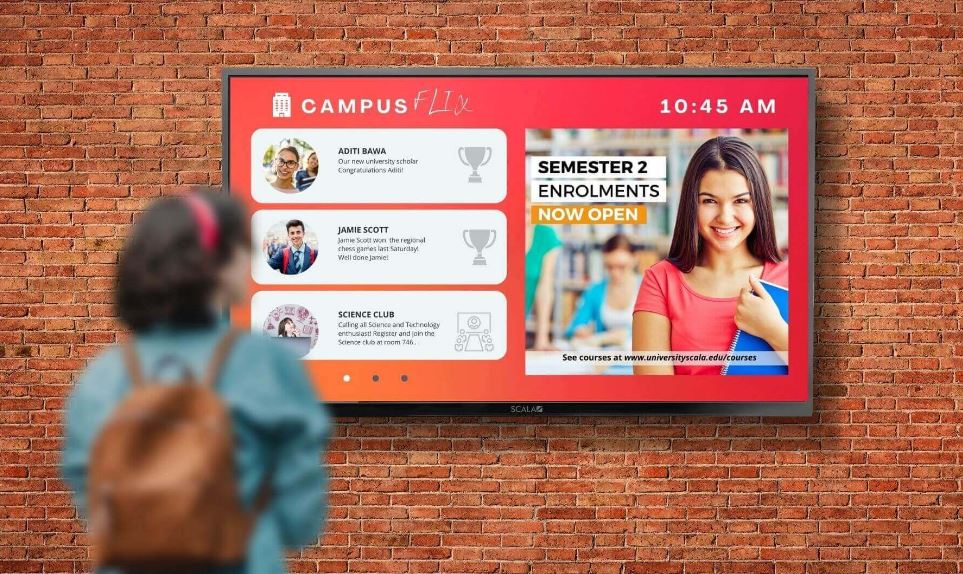In the digital age, educational institutions are continuously seeking innovative methods to enhance communication and engage with students, staff, and parents more effectively. Digital signage for education has emerged as a pivotal technology in this quest, offering dynamic solutions that surpass traditional communication methods. This article explores the multifaceted benefits of digital signage in schools, illustrating its impact on educational environments.
Enhanced Engagement and Information Retention
Digital signage captures attention far more effectively than static posters or announcements over a PA system. With vibrant displays and moving images, these signs can convey essential information while engaging students’ visual senses, leading to better information retention. For instance, announcements about upcoming events or deadlines are more likely to be remembered if they are displayed on colorful, dynamic screens around the school.
Real-Time Communication
One of the standout features of digital signage is its ability to broadcast real-time information. This is particularly useful in schools for immediate dissemination of urgent messages, such as safety alerts or sudden changes in schedules. The flexibility to update content instantly, without the need to physically replace signs, means that schools can maintain timely and relevant communication at all times.
Cost-Effectiveness and Environmental Impact
Transitioning to digital signage from traditional paper-based methods not only reduces the cost associated with printing flyers, posters, and memos but also minimizes waste, supporting eco-friendly initiatives within schools. The long-term savings in both materials and labor can be substantial, making digital signage a cost-effective choice for budget-conscious educational institutions.
Customizable Content and Scheduling
The ability to customize and schedule content easily is another significant advantage of digital signage. Schools can program displays to show certain messages at specific times of the day, tailoring communication to different audience segments. For example, morning messages might target students with reminders about the day’s activities, while afternoon content could be aimed at parents picking up their children.
Enhancing School Safety
In emergencies, digital signage can play a critical role in school safety. Screens can be used to provide clear, visible instructions about evacuation routes or lockdown procedures, significantly enhancing the effectiveness of a school’s response to crises. This use of digital signage for safety purposes not only reassures parents about their children’s welfare but also ensures compliance with safety regulations.
Facilitating a Connected School Environment
Digital signage helps foster a sense of community within the school by highlighting student achievements, upcoming events, and daily news. This can boost morale and promote a positive school culture. Screens located in common areas or cafeterias can become focal points for community engagement, encouraging students and staff to interact more actively with the school’s informational ecosystem.
Accessibility and Inclusivity
Digital signs can also be tailored to meet the needs of all students, including those with disabilities. Features like high-contrast displays and large text formats ensure that messages are accessible to students with visual impairments, while audio components can aid those who have difficulty reading.
Streamlining Campus Navigation
For larger campuses, digital signage can be invaluable in helping new students, staff, and visitors navigate complex school layouts. Interactive maps and directories can guide users to their destinations efficiently, reducing confusion and saving time.
Conclusion
Digital signage represents a transformative approach to communication within schools, blending technology with educational needs to create more engaged, informed, and safe environments. By leveraging real-time updates, customizable content, and visually engaging displays, schools can significantly enhance the effectiveness of their communication strategies, ensuring that all members of the school community are well-informed and connected.
As educational institutions continue to adapt to technological advancements, the role of digital signage will likely become even more integral in fostering effective school communication. Its ability to convey important messages swiftly, cost-effectively, and attractively makes it an indispensable tool in the modern educational landscape.







